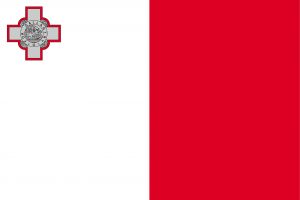Difference between revisions of "Language/Maltese/Vocabulary/Numbers"
m (Quick edit) |
m (Quick edit) |
||
| Line 1: | Line 1: | ||
<span pgnav> | |||
{| class="wikitable pg_template_nav" | |||
|[[Language/Maltese/Vocabulary/Colors|◀️ Colors — Previous Lesson]] | |||
|[[Language/Maltese/Vocabulary/Days-of-the-Week|Next Lesson — Days of the Week ▶️]] | |||
|} | |||
</span> | |||
{{Maltese-Page-Top}} | {{Maltese-Page-Top}} | ||
| Line 131: | Line 138: | ||
{{Maltese-Page-Bottom}} | {{Maltese-Page-Bottom}} | ||
<span pgnav> | |||
{| class="wikitable pg_template_nav" | |||
|[[Language/Maltese/Vocabulary/Colors|◀️ Colors — Previous Lesson]] | |||
|[[Language/Maltese/Vocabulary/Days-of-the-Week|Next Lesson — Days of the Week ▶️]] | |||
|} | |||
</span> | |||
Revision as of 22:44, 2 April 2023
| ◀️ Colors — Previous Lesson | Next Lesson — Days of the Week ▶️ |
Welcome to the "Complete 0 to A1 Maltese Course"! In this lesson, you will learn how to count from 1 to 100 in Maltese. Numbers are integral to everyday communication, whether you're asking for the price of an item in a shop or telling someone your phone number. By the end of this lesson, you will be able to confidently use numbers in Maltese conversations.
Numbers in Maltese
Maltese numbers are relatively easy to learn, as they follow a logical decimal structure. The numbers from 1 to 10 have unique names, whereas the numbers from 11 to 19 are formed by adding the suffix -axxa (e.g. għaxra u tmienaxxa, 18). For numbers from 20 to 90, ten is added to the prefix corresponding to the tens place (e.g. sebgħin, 70), and for numbers from 21 to 99, the conjunction u (and) is used between the tens and units place (e.g. ħamsin u għoxrin, 50). The word "hundred" is miġja (plural: mija), and it follows the same structure as the tens place, with the exception that it is not separated from the units place by the conjunction u (and).
Here are the Maltese numbers from 1 to 20:
| Maltese | Pronunciation | English |
|---|---|---|
| wieħed | 'wi-hed | one |
| tnejn | 'tnien | two |
| tlieta | 'tlieta | three |
| ħamra | 'ħam-ra | four |
| ħamsa | 'ħam-sa | five |
| sitta | 'sit-ta | six |
| seba' | 'seb-a | seven |
| tmienja | 'tmien-ya | eight |
| disgħa | 'dis-ħa | nine |
| għaxra | 'ɐʃ-ra | ten |
| ħdaxxa | ħə-daxː-ɐ | eleven |
| tnaxxa | tnaxː-ɐ | twelve |
| tlietaxxa | 'tlieta-ʃ-ʃa | thirteen |
| erbataxxa | ɛr-bat-ax-ʃa | fourteen |
| ħmistaxxa | ħmɪsˤt-ɐ-ʃ-ʃa | fifteen |
| sittaxxa | sit-ta-ʃ-ʃa | sixteen |
| sebgħataxxa | seb-ɐt-ax-ʃa | seventeen |
| tmintaxxa | tmin-ta-ʃ-ʃa | eighteen |
| disgħinaxxa | dis-ɧin-ax-ʃa | nineteen |
| għoxrin | 'ɐʃ-ri | twenty |
Here are the Maltese numbers from 30 to 100:
| Maltese | Pronunciation | English |
|---|---|---|
| tletin | 'tli-tin | thirty |
| erbgħin | ɛrb-ʧin | forty |
| ħamsin | 'ħam-sin | fifty |
| sittin | 'sit-tin | sixty |
| sebħin | 'seb-ħin | seventy |
| tmienin | 'tmien-in | eighty |
| disgħin | 'dis-ħin | ninety |
| miġja | 'mid-ʒa | one hundred |
As you can see, the tens place follows a consistent pattern, making it easy to count in Maltese. However, it is important to note that Maltese numbers are gendered, so the suffixes used for the numbers will change depending on the gender of the noun being counted. For example, to say "two cats" you would say tnejn qattus (using the masculine plural suffix), but to say "two cars" you would say tnejn karozzi (using the feminine plural suffix).
Now that you know the basics of Maltese numbers, it's time to practice counting! Here are some exercises to help you reinforce your understanding of the topic.
Exercises
- Write out the Maltese numbers from 1 to 10.
- What is the Maltese word for "twenty-five"?
- How would you say "one hundred sheep"?
- Fill in the blanks: sab'a u _________ (seven and three).
- Change the following phrases to reflect feminine plural: tnejn kittieba (two male writers), seba' żwiemel (seven male camels), erbatax-xogħolijiet (four male jobs).
Conclusion
Congratulations on completing this lesson on Maltese numbers! You should now be able to confidently count from 1 to 100 in Maltese, using the gendered suffixes for nouns as needed. In the next lesson, we will learn the days of the week in Maltese and how to use them in sentences. Happy learning!
Other Lessons
- Sports
- Days of the Week
- Feelings and Emotions
- Education
- Languages Lingwi
- Food
- Basic Phrases in Maltese
- Count to 10
- Relationships
- Beverages
Sources
| ◀️ Colors — Previous Lesson | Next Lesson — Days of the Week ▶️ |
